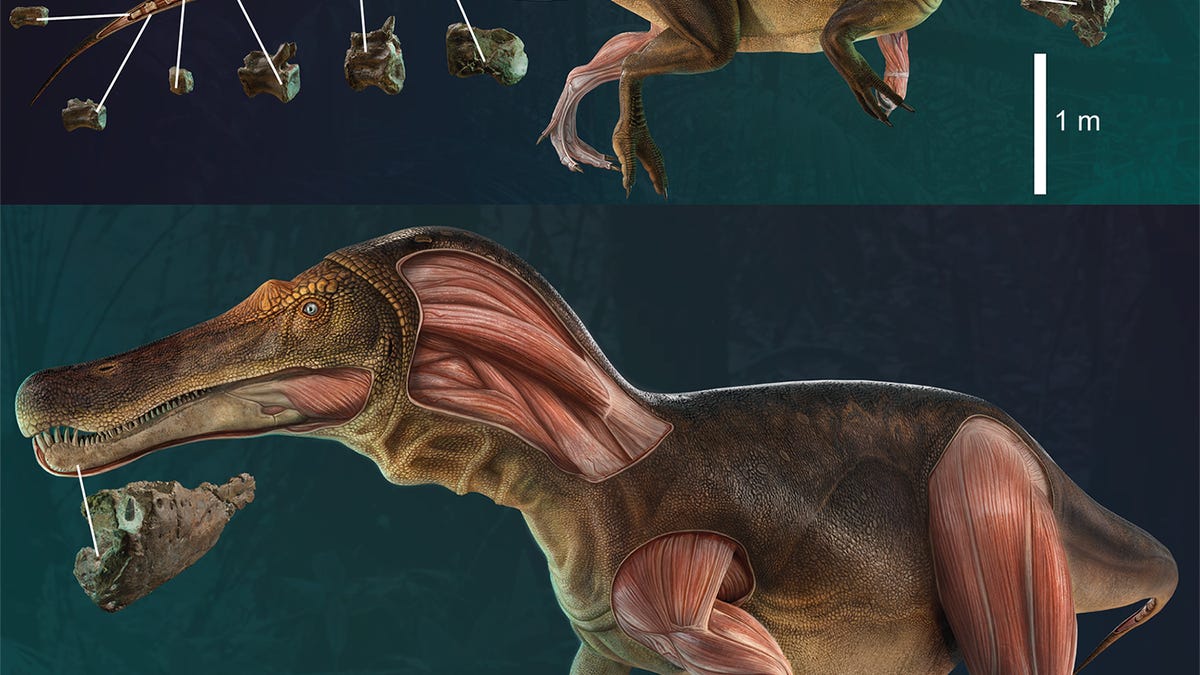125-Million-Year-Old Crocodile-Faced Relative of Spinosaurus Discovered
The new dinosaur may've been a fish-hunting predator that waded through waters.

A 3D-digitized reconstruction of the Iberospinus natarioi.
A new dinosaur has been discovered, which paleontologists say could've been a predator that waded through waters and mainly ate fish. The spinosaurid dinosaur lived more than 125 million years ago and had a skull resembling that of a crocodile, as well as a spiny back.
Paleontologists in Cabo Espichel, Portugal, uncovered bones and teeth in 2020 from the Iberospinus natarioi dinosaur, which they say would've lived in the early Cretaceous period. The remains of ornithopods, turtles, pterosaurs and fish were recovered from the same site.
"Despite the fragmentary nature of its remains ... it is currently one of the most complete spinosaurid specimens in the world," paleontologists and biologists Octávio Mateus and Darío Estraviz-López, from the Universidade NOVA de Lisboa, said in an article published Wednesday in the PLOS One journal.
The oldest confirmed spinosaurid dinosaurs have been tracked back to Western Europe and Southeast Asia, and the creatures later appeared in Southeast Asia, Africa and South America. The history of their evolution is more difficult to track than that of other dinosaurs, the article said, pointing to a "ghost lineage" of 50 million years, through the middle Jurassic and early Cretaceous periods, where there are "scarce or disputed" fossils.
The lack of spinosaurid remains is partly due to their presence in aquatic environments, "either as specialized pursuit aquatic predators in some cases or as wading-ambush hunters, like herons."
This makes the latest discovery important, as it contained so many bones and other remains, including teeth, dentary fragments, partial right scapula, dorsal neural arches, dorsal vertebrae, vertebrae, rib fragments, a pubic peduncle, a pubis shaft, a heel bone and a phalanx bone.

